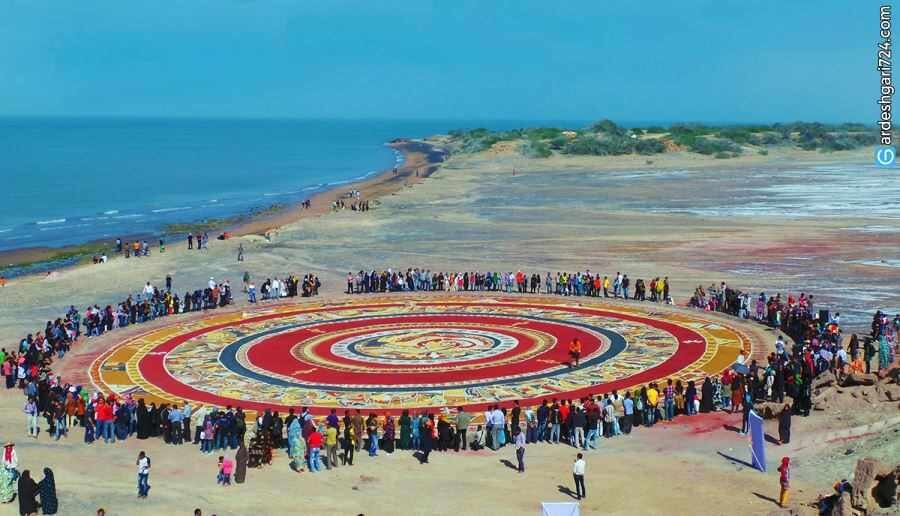Hormuz Island: a stunning mix of golden beaches, awesome bluffs

TEHRAN - With its colorful soils, salt caves and mountains, and ocher-stained streams and beaches, Iran’s Hormuz Island in the Persian Gulf packs a big punch. It resembles a salt dome—a teardrop-shaped mound of rock salt, gypsum, anhydrite, and other evaporites that have risen upward through overlying layers of rock.
Most of its visitors are day-trippers, who come from Bandar Abbas or Qeshm Island, so even the only settlement. Some say that Hormuz is a sleepy little village that kicks off its shoes each evening and relaxes into mellow contemplation of the setting sun!
There is only one road and virtually no cars, just motorbikes and tuk-tuks, and the rest of the 42-sq-km island are virtually uninhabited. The rugged interior is a scenic geological wonderland of different-colored volcanic rocks and soils, while the coastline is a stunning mix of golden beaches and awesome bluffs.
Most of its visitors are day-trippers, who come from Bandar Abbas or Qeshm Island, so even the only settlement. Some say that Hormuz is a sleepy little village that kicks off its shoes each evening and relaxes into mellow contemplation of the setting sun! The rising mass is not purely made of salt. Embedded within it are layers of clay, carbonates, shale, and iron-rich volcanic rocks, some of which have taken on vivid shades of red, yellow, and orange as they moved upward and interacted with water and minerals from other rock layers.
The ocher soils on the island have proven appealing to cooks, artists, and miners alike. Locals reportedly use the red soil to season a certain type of bread. Groups of artists have used it to create expansive sand carpets. Sand from a mine in the northern part of the island has also been used in paints, cosmetics, ceramic tiles, and for the exteriors of buildings.
One nongeological feature of the island stands out in the image: At the northern end, a small inlet hosts a concentrated patch of mangroves that appear green. Known locally as a hara forest, the area serves as a habitat for numerous types of fish, mollusks, crustaceans, and migratory birds.
The island also features ruins of Portuguese ramparts with clusters of eroding artillery cannons all around. In the early 16th century, the land was occupied by Portuguese forces who utilized it as a stopover for ships voyaging to Goa, Gujarat, and nearby Qeshm.
The arid island gets unbelievably hot during midday so that ideally, winter may be the best time to pay a visit. In the summertime, its temperate can rise to over 43 °C. Traditionally, its reddish soil, which indigenous people call it “Golak”, is used for making local foodstuff for decorative arts and even as spices for cooking fish to making pickled vegetables.
Just like Qeshm Island, Hormuz Island is also located in the Hormozgan Province of Iran. Hormuz Island is around 20 km from Qeshm Island and maybe a bit more from Bandar Abbas. And similarly to Qeshm Island, Hormuz is also situated in the Strait of Hormuz in the Persian Gulf.
AFM/MG
